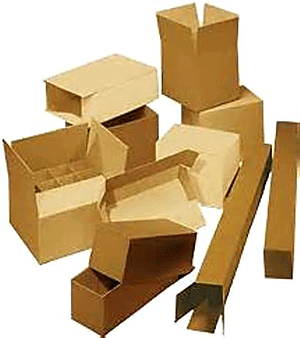World Corrugated Box Demand to Rise 4.2% Annually to 2017
 Print this article | Send to Colleague Print this article | Send to Colleague
 World demand for corrugated boxes will rise 4.2% per year to 234 billion square meters in 2017, according to a new report by the Freedonia Group, Cleveland, Ohio, USA. The fastest growth will occur in developing areas, especially in the Asia/Pacific and Africa/Mideast regions. Food and beverages will remain the leading market for corrugated boxes in 2017, accounting for 43% of global demand, while the nonfood, nondurables segment will grow the fastest. World demand for corrugated boxes will rise 4.2% per year to 234 billion square meters in 2017, according to a new report by the Freedonia Group, Cleveland, Ohio, USA. The fastest growth will occur in developing areas, especially in the Asia/Pacific and Africa/Mideast regions. Food and beverages will remain the leading market for corrugated boxes in 2017, accounting for 43% of global demand, while the nonfood, nondurables segment will grow the fastest.
The new study analyzes the 190.7 billion square meter world box industry, and presents historical demand data for 2002, 2007, and 2012, and forecasts for 2017 and 2022 by raw material (e.g., containerboard, adhesives, inks, waxes), market (e.g., food and beverage, nonfood nondurables), world region, and for 27 major countries.
The study also considers market environment factors, details industry structure, evaluates company market share, and profiles 33 industry players, including International Paper, Smurfit Kappa, and Rock-Tenn.
According to the report, advances will represent a notable acceleration from the 2007-2012 period, in which most developed world markets in North America and Western Europe experienced sluggish increases—or even declines—in corrugated box demand. Going forward, gains will be driven by an improved economic outlook as these regions continue to recover from the global economic downturn.
As economies strengthen, demand for manufactured goods will increase as a matter of course, stimulating sales of related packaging like corrugated boxes. The continued expansion of the electronic shopping market will drive heightened requirements for corrugated boxes used in the fulfillment of such sales. Advances will also be fueled by the expanded food, beverage, and durable goods output, while rising construction spending will stimulate demand for goods and materials (and their related boxes) used in construction applications.
Opportunities are also anticipated for retail-ready, or shelf-ready, corrugated box packaging, which is increasingly demanded by retailers as a means of controlling labor costs. Retail-ready corrugated boxes are designed to enable products to be placed on store shelves with minimal preparation. Such boxes tend to incorporate clean tearing features that allow the boxes to be converted from shipping containers into display trays without the use of box knives.
The Asia/Pacific region will remain the largest and fastest-growing outlet for corrugated boxes through 2017. Gains will continue to be driven by the large market in China; although slowing from the double digit growth seen during the 2002-2012 period, the country will post strong gains going forward. Corrugated box demand in the region will also benefit from healthy gains in countries such as India and Vietnam, although subpar increases in the Japanese market will temper this to some extent. Above average growth is also forecast for Central and South America and in the Africa/Mideast regions, areas in which corrugated demand per capita is below the world average. Although North America and Western Europe will post below-average gains, corrugated box demand in these markets will rebound from 2007-2012 declines.
Demand for containerboard, the primary raw material for corrugated boxes, will also accelerate from the slow growth of the 2007-2012 period. However, volume growth will be restrained by the heightened use of lighter weight, high performance containerboard in light of sustainability and cost control efforts. North America and Western Europe will also see demand improve from the declines of the 2007-2012 period, with both regions continuing to be net exporters of containerboard. The Asia/Pacific region will remain the leading market for containerboard with strong growth in demand anticipated for China, India, Indonesia, and Vietnam. However, although containerboard production is expected to outpace demand, the region will remain a net importer of containerboard.
In both the Africa/Mideast and Central and South America regions, containerboard production will expand faster than demand, although both markets will remain net importers. Containerboard demand in Eastern Europe is expected to expand at an average pace.
More information is available online.
|
|

